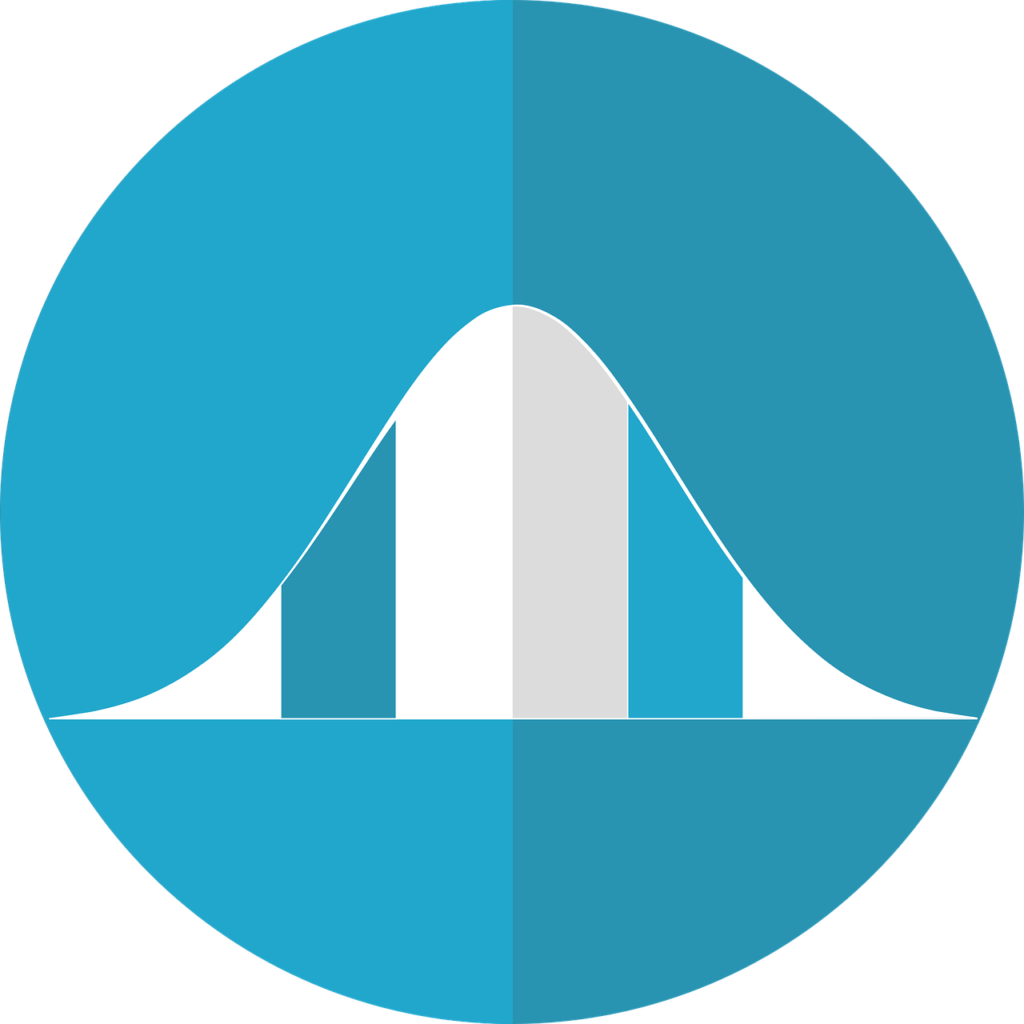A unimodal histogram is a type of graph that represents a set of data with a single peak. This peak represents the most common value in the data set. The shape of a unimodal histogram is usualy smooth, with a gradually increasing slope leading up to the peak and a gradually decreasing slope leading away from the peak.
This type of histogram is commonly used in statistics to represent a variety of different data sets. For example, a unimodal histogram might be used to represent the grades of a class of students. If most of the students in the class received a B, then the peak of the histogram would be located at the B grade level.
One of the benefits of using a unimodal histogram is that it can help to quickly and easily identify the most common value in a data set. This can be helpful for making decisions or drawing conclusions based on the data. For example, a business might use a unimodal histogram to analyze sales data and identify the most popular product.
It is important to note, however, that a unimodal histogram is just one type of graph that can be used to represent data. There are many other types of graphs, such as scatter plots, box plots, and line graphs, that can be used depending on the type of data being analyzed and the questions being asked.
A unimodal histogram is a useful tool for representing data with a single peak. By understanding the shape and characteristics of this type of graph, individuals and businesses can make informed decisions and draw meaningful conclusions based on their data.
What Does Unimodal Look Like?
A unimodal graph is characterized by having a single peak or highest point in the curve. The shape of the graph is smooth and the highest point may be located at the center or on either end of the graph. The curve is not jagged or erratic but rather follows a smooth line. Put simply, a unimodal graph has one main peak and a symmetric or nearly symmetric shape on either side of it. It is important to note that the term “unimodal” specifically refers to the shape of the graph and not the data it represents.

How Do You Know If A Histogram Is Unimodal?
To determine if a histogram is unimodal, you must examine the shape of the distribution. Look for a single peak or hump in the data. If there is only one peak, then the histogram is unimodal. This means that there is one mode or most frequently occurring value in the data. You can also check for symmetry in the histogram, if the data is evenly distributed on both sides of the peak, then it is likly to be unimodal. However, if there are multiple peaks or humps, then the histogram is not unimodal. It is bimodal or multimodal depending on the number of peaks. By analyzing the shape of the histogram, you can easily determine if the data is unimodal or not.
What Is Unimodal And Bimodal Examples?
Unimodal and bimodal are terms used in statistics to describe the shape of a distribution. Unimodal distribution is characterized by having a single peak or mode, which is the vlue that occurs most frequently in the data set. An example of a unimodal distribution could be the test scores of a class where most students scored a B grade, with only a few scoring higher or lower.
On the other hand, a bimodal distribution has two peaks or modes, meaning that there are two values in the data set that occur with the highest frequency. An example of a bimodal distribution could be the test scores of another class where half the students scored a B grade and the other half scored a D grade.
Unimodal and bimodal are terms used to describe the shape of a distribution, with unimodal having a single peak and bimodal having two peaks. Examples of unimodal and bimodal distributions can be found in various data sets, such as test scores, salary distributions, and population density.
What Is A Unimodal Data Distribution?
A unimodal data distribution is a statistical concept that refers to a probability distribution that has only one peak or mode. This means that the data values are clustered arond a central value or range, resulting in a symmetrical or skewed distribution. In other words, the data has a single most common value or range of values. The mode in this context refers to the highest point on the distribution curve, which represents the value that occurs most frequently in the data set. Unimodal distributions are commonly used in various statistical analyses, such as hypothesis testing, descriptive statistics, and probability theory. Examples of unimodal distributions include the normal distribution, the exponential distribution, and the Poisson distribution. Understanding the concept of unimodal data distribution is crucial for analyzing and interpreting statistical data.
Conclusion
A unimodal histogram is a graphical representation of data that has a single peak, or mode, in the distribution. This type of graph can be used to visualize various types of data, such as scores on an exam or the frequency of certain events. Understanding the shape of a histogram can provide valuable insights into the underlying data and can help identify trends or patterns that might not be immediaely apparent from the raw data. By using clear and concise language, we can communicate these insights to others and help them to better understand the data and its implications. the unimodal histogram is a powerful tool in the field of statistics and data analysis, and can be used to inform decision-making and drive important insights in a wide range of contexts.
